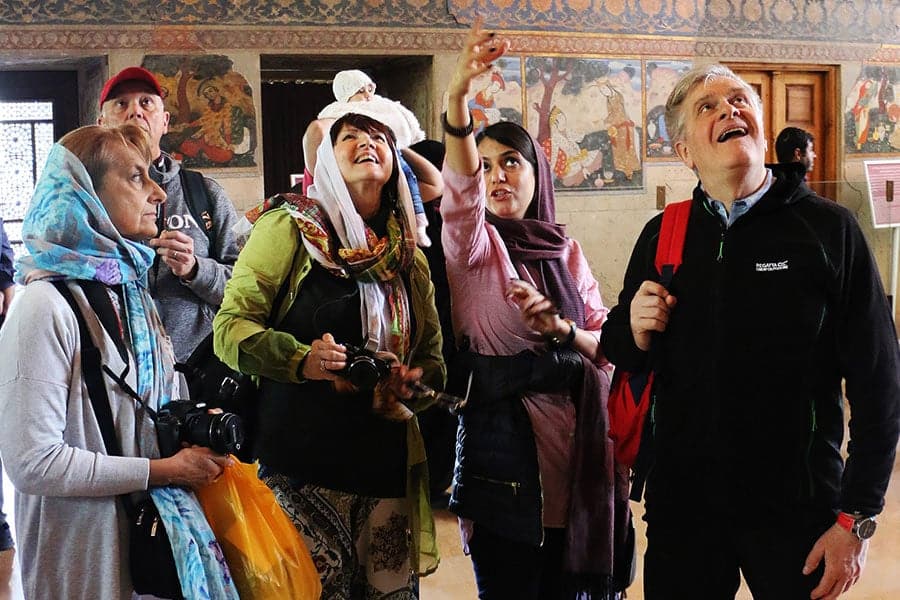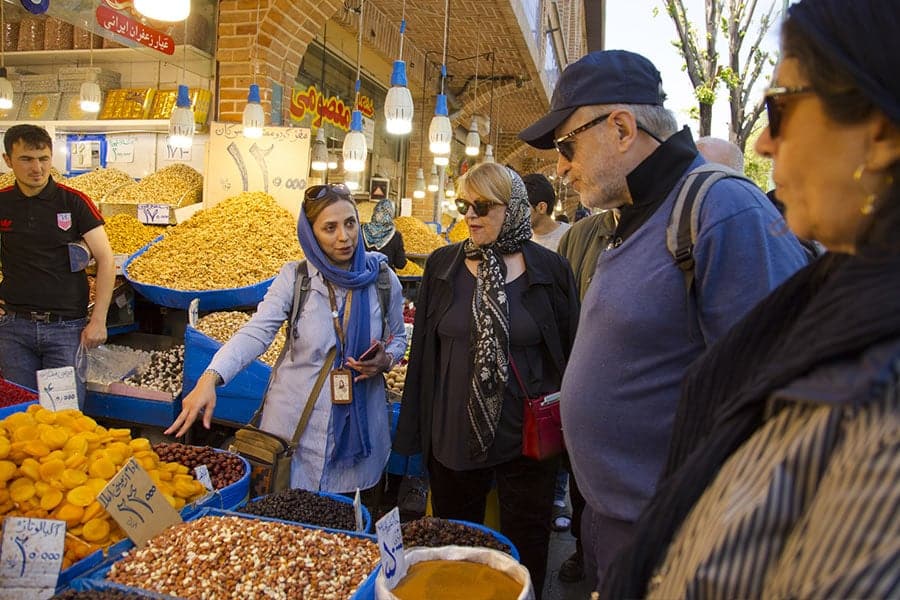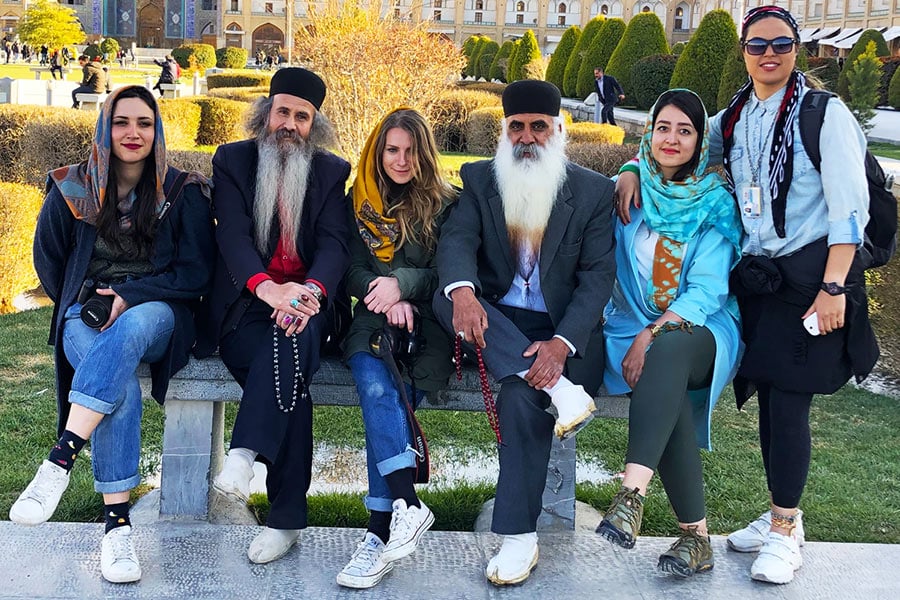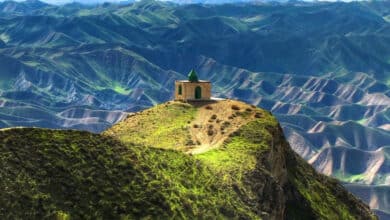Siraf Cemetery in Bushehr: Ancient Iranian Heritage
Ancient Burial Traditions and Rich Archaeological Heritage
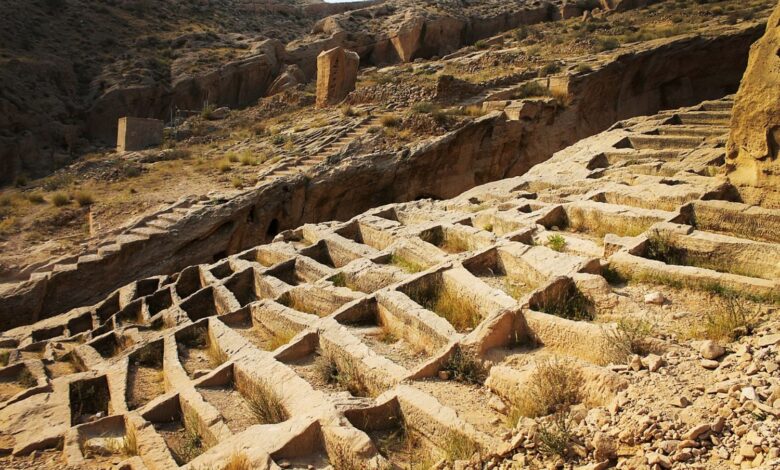
Iranian tourism offers stories as rich as many historical books, as relaxing as hours of piano music, and as comforting as a mother’s embrace. The Siraf Cemetery is a sight that narrates the tales of ancient Iran like a novel, holding countless stories. To truly appreciate the historical sites of Bushehr and other parts of Iran, it’s essential to learn about them first. Without this knowledge, you will see nothing but ancient ruins and decaying bricks. However, with background information, every brick and ruin will tell you a story.
After reading this article, you might find yourself planning a trip to Siraf Cemetery and seeking the best time to visit Bushehr. This article will cover the history of the ancient cemetery in Siraf, its location, and important tips for visiting.
IRAN GROUP TOURS
Join our Iran tours, connecting you with like-minded travelers and streamlining the organization process.
Contents
History of Siraf Cemetery
In Siraf, between the Lir and Shilou valleys, the natural landscape changes with the presence of tombs, caves, and fire temples. These indicate that ancient Iranians once frequented this area. Human bones found in the region support the theory that this area served as a cemetery.
Before and early in the Islamic era, Siraf was one of Iran’s most prosperous ports, home to wealthy people. Today, Siraf is a part of the Assaluyeh region. The initial use of the Siraf Cemetery was to collect and store rainwater, ordered by the early kings who had deep and varied-shaped pits dug throughout the area.
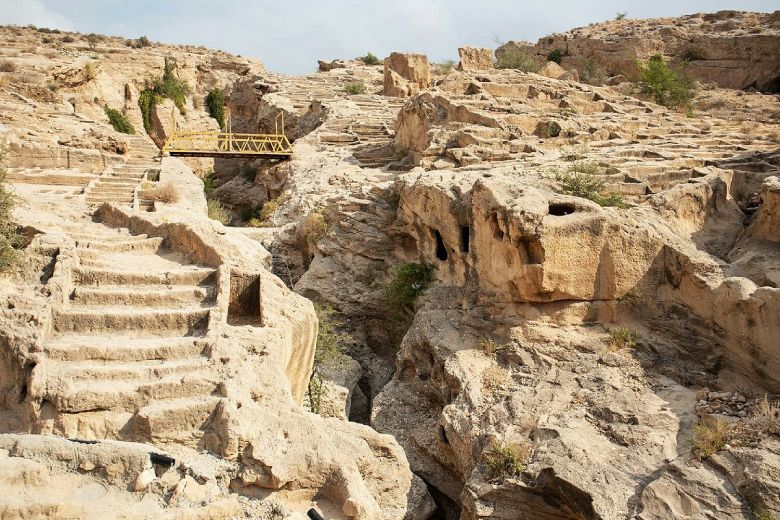
Later, the area was used for other purposes, such as burying the dead, worship, and even caring for the elderly in their final days. Now, the Siraf Cemetery is just one of Bushehr’s tourist attractions. Situated among the cliffs and valleys near Siraf, some visitors only see rocks and desert plants, but a deeper look reveals the ancient stories embedded in its soil.
Architecture of Siraf Cemetery
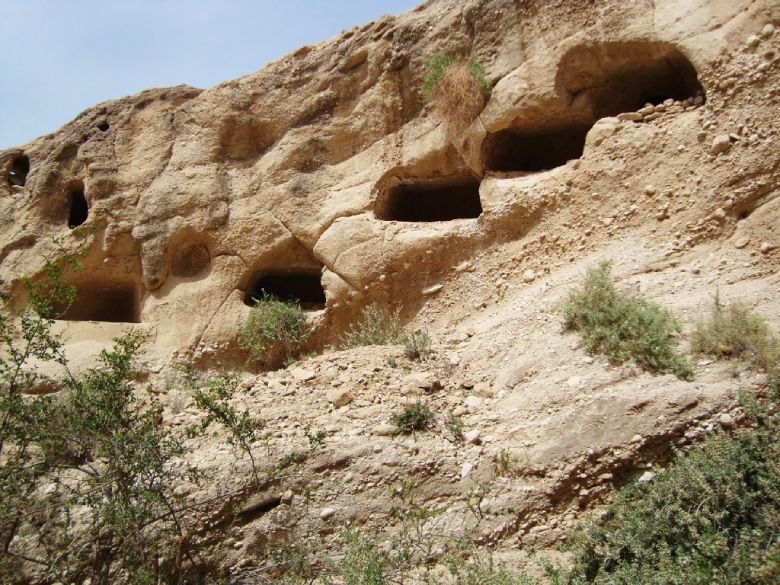
As mentioned, the cemetery lies between the Lir and Shilou valleys. From the right angle, you can see the sea and enjoy the contrast of water and land. Standing facing the cemetery, you will see numerous holes of various sizes, each dug differently. The further you go, the deeper and larger the pits become, until you reach areas where the pits are no longer the size of a grave. On the higher parts of the cliffs, there are pits dug for collecting water.
If you remain silent, a heavy quietness will envelop the area, broken only by the sound of the wind. The space can become somewhat eerie, especially if you see remains of Siraf’s dead or desert creatures. A visit to Siraf Cemetery offers historical interest and a bit of an adrenaline rush.
Be cautious while walking in the cemetery, as there are about 70 deep wells. Nearby the graves, you’ll see towers built from stone with dark windows. The area becomes more haunting at dawn or dusk, especially if you’re a fan of horror films.
Different Sections of Siraf Cemetery
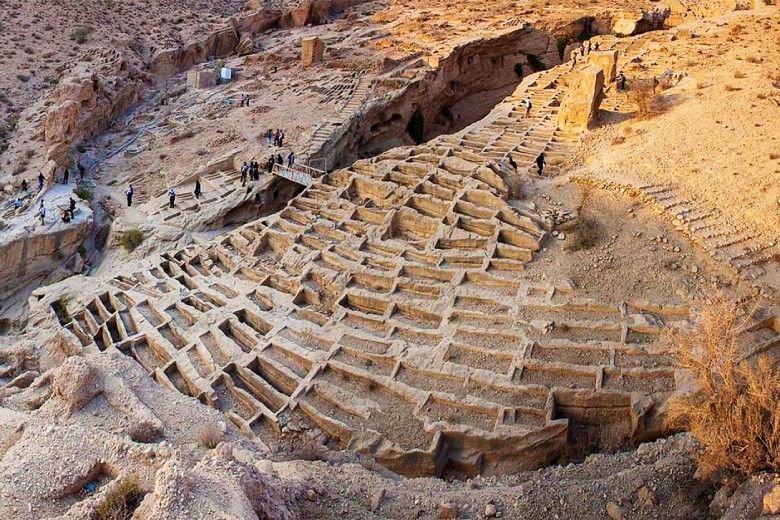
The grandeur of Siraf Cemetery extends to various sections. It served as a passage for the people of Siraf for many years, making it vast and diverse. Some areas are dangerous and should be visited with caution and a guide, while others are safer.
Islamic Graves
Built during the late Sasanian and early Islamic periods, the cemetery contains Islamic graves. Most graves are oriented from east to west. In Islam, it is recommended that graves face the Qibla, and not be oriented east to west. This suggests that most of the graves belong to Zoroastrians, indicating that many people were Zoroastrians at the time.
Near the Islamic graves, there is a green sign indicating the Islamic section, installed by archaeologists. Some Islamic gravestones feature Kufic script, with Quranic verses or the deceased’s name.
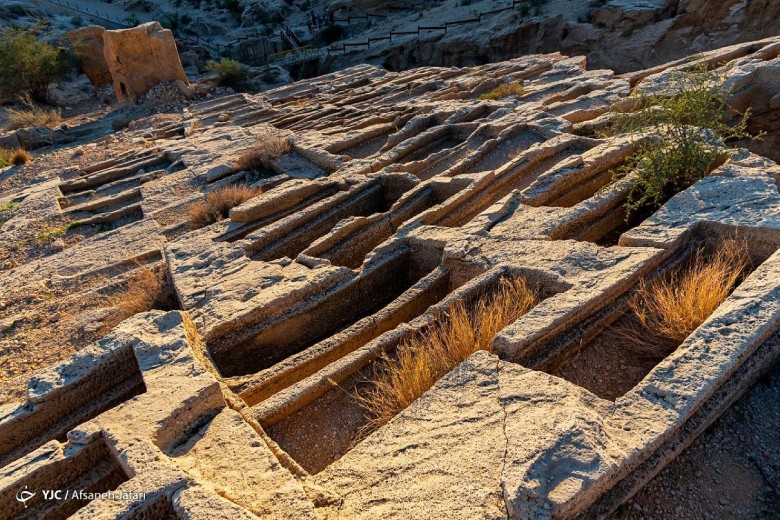
Lir Valley Tombs
Several tombs in the mountains overlooking the cemetery, known as the Lir Valley Tombs, were used for Zoroastrian burials. Currently, there is no pedestrian path to these tombs, but they can be seen from below. Archaeologists have accessed these tombs with ladders, discovering more tombs within the cliffs, their surfaces covered with Sarooj mortar.
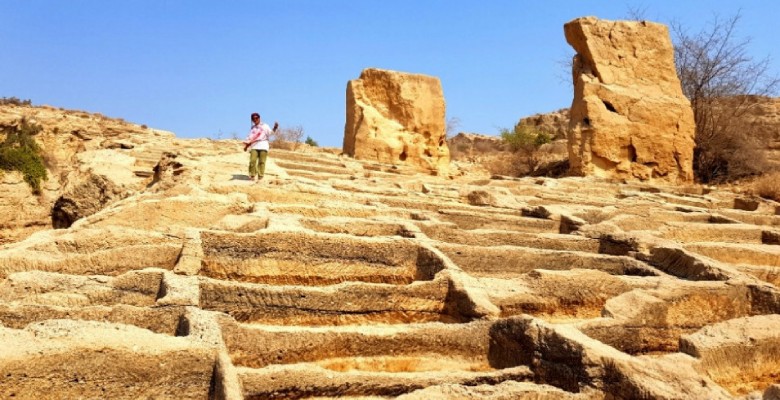
Towers of Silence
The Towers of Silence are among the most eerie parts of Siraf Cemetery. These four stone structures feature designs made with sand and have seven stones stacked on top. Their bodies also have openings resembling cave entrances, giving them a mysterious appearance.
From afar, your imagination might run wild, thinking of wolves or spirits inhabiting these towers. Approaching them requires courage, but no supernatural beings await. At most, a small lizard might crawl out of the darkness.
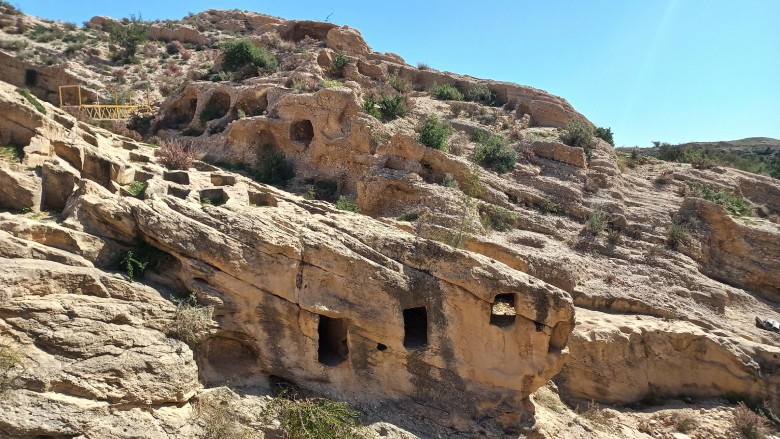
Hand-dug Wells
Throughout the cemetery, there are hand-dug wells with stone rings around them. Estimated to be between 70 and 100, these wells are up to 130 meters deep. Imagine the effort of workers in the Sasanian era, digging these wells by hand without modern machinery.
The wells in Siraf Cemetery remind me of the water well described in Antoine de Saint-Exupéry’s “The Little Prince,” though these are much deeper.
Zoroastrian Fire Temple
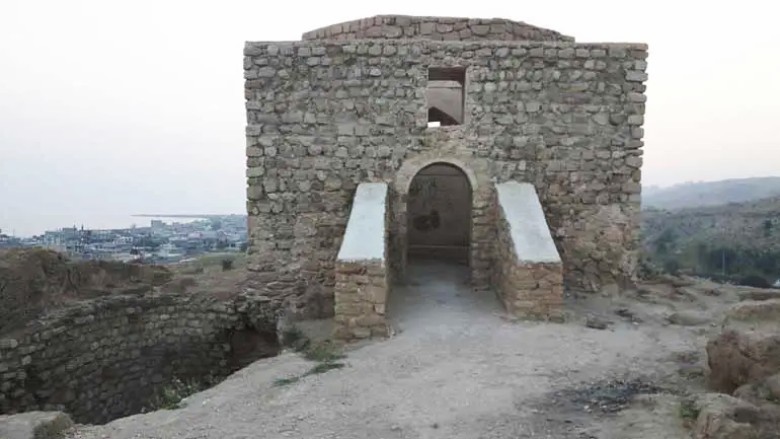
On a hill overlooking the Lir Valley, there are remnants resembling a Zoroastrian fire temple, where Zoroastrians worshipped Ahura Mazda. This area was also used to store firewood and aromatic herbs burned in the temple.
Elderly Care Theory
Some archaeologists believe that the Jews living in Siraf brought elderly individuals close to death to the cemetery’s tombs or ossuaries. They cared for these individuals until they passed away and then buried them in the graves. This theory remains unproven.
Visiting Siraf Cemetery
Access to the Siraf Cemetery is possible from within the port city of Siraf. Regular cars can reach the area, but for a professional visit, it is better to join a tour, use off-road vehicles, and have a knowledgeable guide.
Book Services, Pay Online
Here are some tips for visiting the cemetery:
- Free admission: No entry fee is required.
- No nearby amenities: Bring all necessary food and drinks from the city.
- Suitable footwear: Wear appropriate shoes and comfortable clothing for walking on dirt and rocky paths.
- Watch your step: Be cautious of the cemetery’s holes and avoid walking on narrow edges.
- Supervise children: Keep an eye on them at all times.
- Leave no trace: Take your trash with you and respect the historical site.
- Daytime visits: Visit during daylight hours and avoid going near dusk.
- Professional guidance: For off-roading or safari activities, go with experienced professionals.
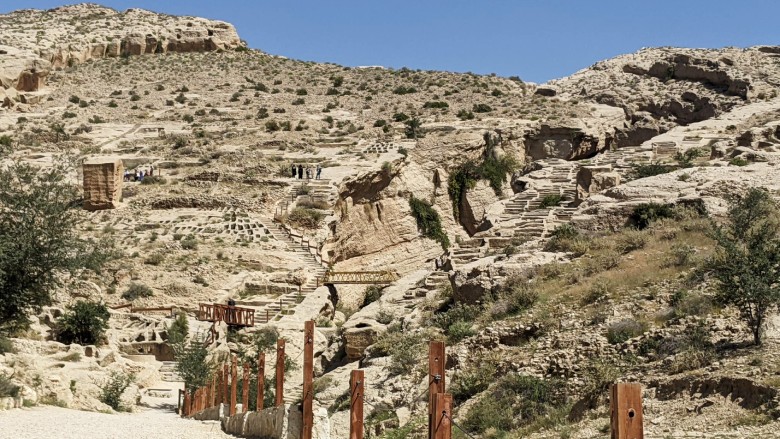
Best Time to Visit
Southern Iran has a tropical climate, with most days of the year being warm. Even in autumn and winter, the weather in Bushehr is mild. The best times to visit are from March to May and from October to mid-November, when the weather is pleasant and the days are long. To avoid crowds, steer clear of public holidays and the end of March.
Location and Directions
Siraf Cemetery is in Bushehr province, in the city of Kangan, in the port of Siraf. For precise directions, use a map or navigation software.
From Kangan, Jam, or Assaluyeh highways, reach the Taheri junction, where these highways intersect. From there, take the road to Siraf and follow Khalij Fars Boulevard. Use a map or ask locals for the route to the cemetery. You can drive near the cemetery but will need to walk a few minutes to reach the site.
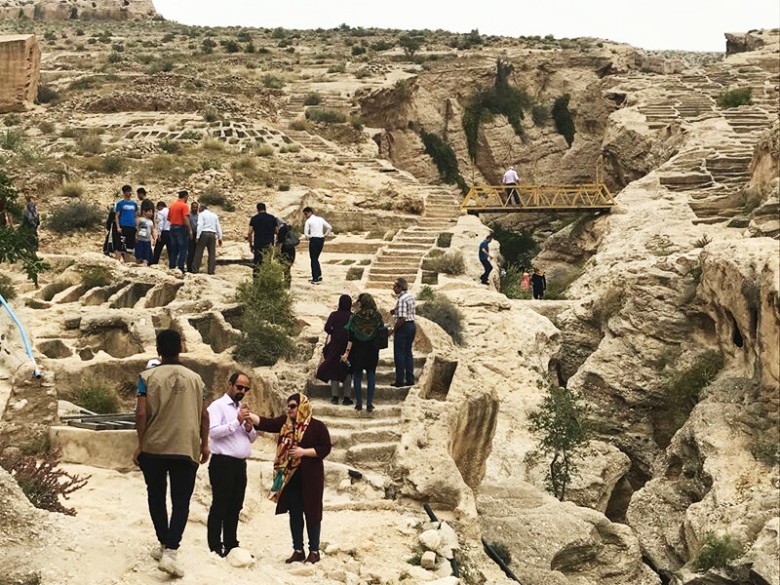
Nearby Attractions
You only need two to three hours to explore Siraf Cemetery, leaving time for other local attractions:
- Nasouri Castle: A Qajar-era castle, similar in architecture to historical sites in other parts of Iran.
- Historical Siraf Market: Once a bustling hub, now a quieter but still interesting spot to explore and support local economy.
- Siraf Port Museum: Houses artifacts found in Siraf Cemetery, located in the home of Dr. Whitehouse, an archaeologist who led excavations in the area in the 1960s.
Experience History in Siraf
This article highlights the fascinating Siraf Cemetery, filled with large pits, deep wells, and various tombs. This location could be ideal for filming a sci-fi or horror movie. Let your imagination soar as you explore this ancient site. When planning a trip to the beautiful Bushehr, consider adding Siraf Cemetery to your itinerary for a unique historical adventure.
Read More
